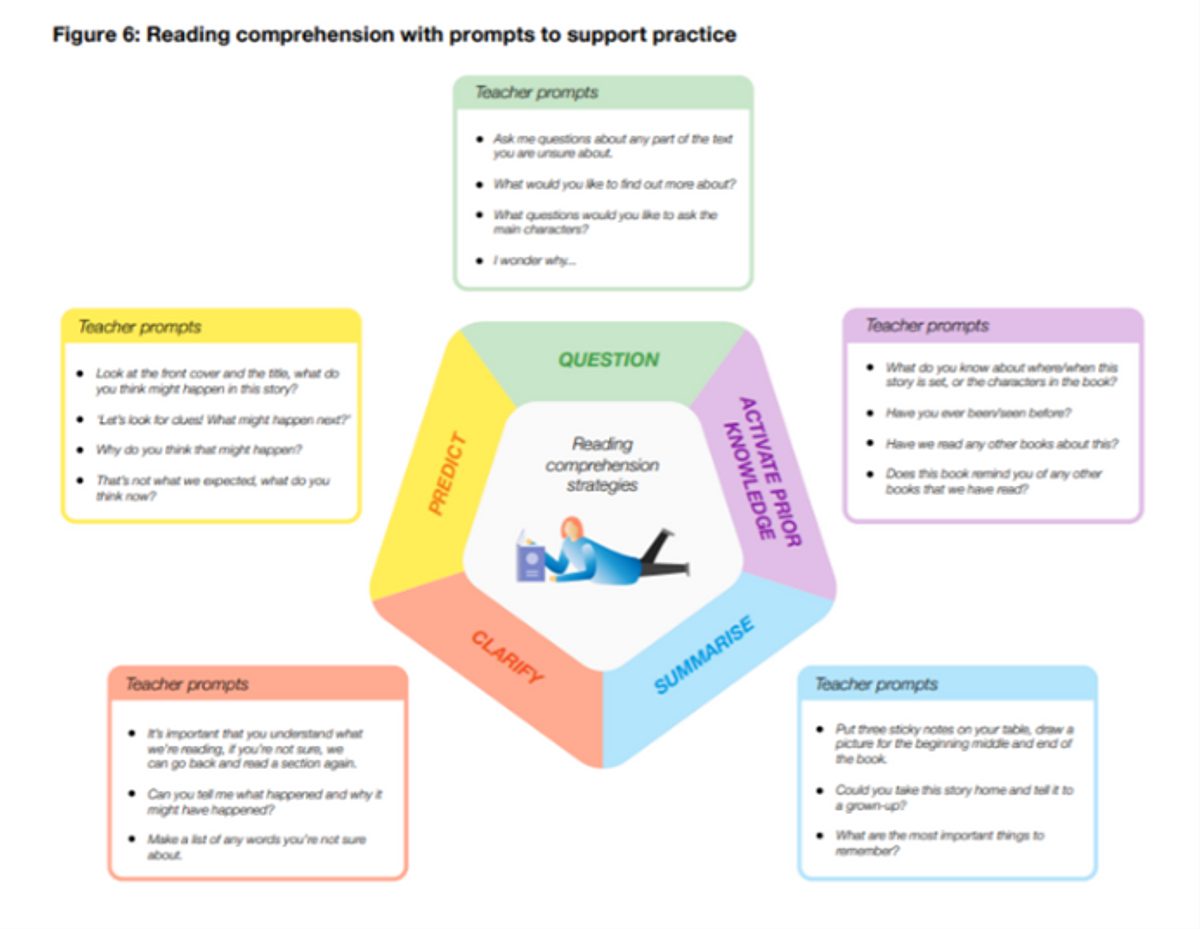Teaching children to read is fundamental to all other activity that takes place in the classroom. It demands our time, energy, and commitment. A simple ask of the families who entrust their children to us every day…teach my child to read. A simple ask, but a complex undertaking.
The Simple View of Reading provides a helpful point from which to understand that complexity. Breaking down to its component parts, the model highlights that successful reading is a product of two complex, but separable processes:
- Word reading: The ability to recognise, decode and understand the meaning of individual written words.
- Language comprehension: A multidimensional process that is used to access the underlying meaning of spoken and written language. This involves the integration of multiple sources of knowledge and skills, including knowledge of word meanings and syntax, and making inferences (for example, drawing on background knowledge as we listen and read).

The Simple View of Reading identifies the individual components, and reminds us of the need for a balanced approach to the teaching of literacy. It supports our understanding of the importance of word reading through systematic teaching of phonics. It also focuses our attention to the development of comprehension of the spoken and written word. When considering how to teach reading comprehension, the EEF Teaching and Learning Toolkit cites reading comprehension strategies as delivering an additional six months of progress.
What are reading comprehension strategies and how do they work?
Reading comprehension strategies are a series of techniques which support children to comprehend the meaning of what they are reading. For example, where weaker readers may be less successful in asking questions of a text, modelling and scaffolding can supports them to do so. We may also support children to summarise what they have read so that they are able to consolidate the meaning of the text effectively
Figure 1, from the updated Improving Literacy in Key Stage 1, aims to support teachers with a series of prompts for each of the reading comprehension strategies. They can be adapted for use with any text in the classroom.

The explicit teaching of reading comprehension strategies works by giving ‘novice’ readers the tools to think like ‘experts’ when reading – which is a necessity when pupils face complex academic texts. To develop these tools fully, Shanahan adds the importance of intentionality: the intent to read and understand. We do this by providing texts that provoke genuine interest and a desire to know. Careful choice of complex texts avoids treating reading comprehension as if it happened spontaneously as an automatic result of reading the words.
How long should we spend teaching reading comprehension strategies?
In Ending the Reading Wars, Castles et al suggest that reading comprehension strategies can be taught quickly and with relatively little instruction. Willingham states that continued instruction does not yield further benefits. In fact, having taught the strategies, he suggests the focus should move to ongoing support for a wide vocabulary, and the rich background knowledge which will yield long-term benefits
In my own classroom, I have found that an intense focus, early in the year, is both exciting and rewarding in terms of the benefits for the year ahead. Teaching each strategy through modelling and scaffolding, provides a shared language with which to interact with texts. Whilst I enjoy using non-fiction texts, novels and collections of short stories for this work in English lessons, I also look to capitalise on the opportunities provided with any text we pick up. That even includes the words to songs we sing together!
In my experience, the most significant factor affecting the time spent scaffolding the strategies, is the opportunity I take to work with texts beyond the English lesson too. So, any reading in science or history is also an opportunity to teach the strategies. This early saturation pays dividends when the children are ready to read strategically, across the curriculum, without the need for the scaffolds I built to support them.
Occasional revisiting of the strategies is necessary, but often brief. The constant discussion of the texts we read provides numerous opportunities to assess the needs of the children. And if necessary, I can revisit the scaffolds with individual children, groups, or as a class. I often find it is only gentle tweaks and nudges that are needed to maintain this focus.
Helpful to all pupils, harmful to none, and crucial for some
The brilliant complexity of reading is certainly matched by the unwavering conviction of teachers to better understand it. To understand that it is essential to coordinate the teaching of comprehension alongside decoding. To know that, akin to phonics teaching, reading comprehension strategy instruction is likely to be helpful to all pupils, harmful to none, and crucial for some
